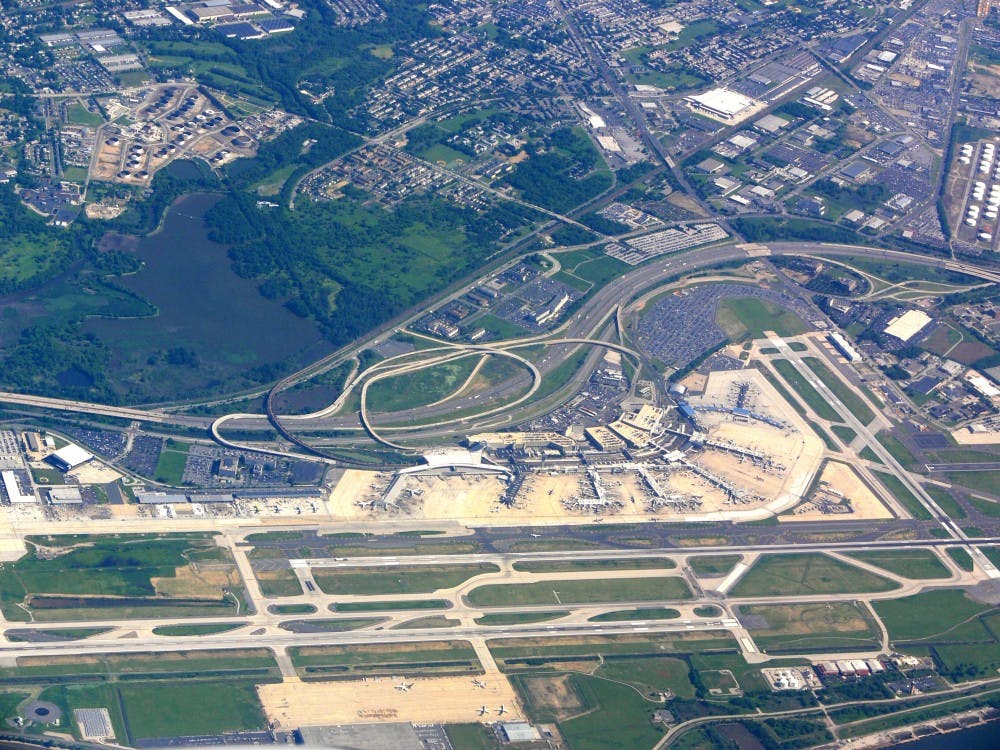Flooding, soil contamination, and air pollution have plagued residents of the Eastwick neighborhood in southwest Philadelphia. A group of Penn faculty and students are taking action to change that.
Landscape architect and Urban Studies lecturer Michael Nairn said that since 2012, he has worked with colleagues and local residents in bringing neighborhood concerns to city officials. He said that because Eastwick is situated among the Schuylkill River, Delaware River, and two other creeks, the land is dangerously prone to flooding, especially during large storms.
“The problem with the land is that it’s all within [Federal Emergency Management Agency]’s special flood hazard area,” Nairn said.
Nairn added that Eastwick’s wide scope of issues date back to when the neighborhood was redeveloped in the 1950s as part of a large urban renewal project. Over 8,300 people were displaced as their homes were torn down, and this opened the door for regular flooding issues as the more modern buildings were built on wetland.
However, flooding is not the only environmental issue threatening Eastwick. Some Penn faculty and students are examining the health implications of nearby landfills and energy plants. One of the alleged polluters include the Philadelphia International Airport.
Marilyn Howarth, director of the Community Engagement Core at the Center of Excellence in Environmental Toxicology at Penn Medicine, said residents feel that soil contamination and air pollution have been harming their health.
In their research, Howarth and collaborators from health and environmental protection groups such as the Center for Disease Control and and Pennsylvania’s Department for Environmental Protection found the soil contamination was "in people's yards," not just in the landfills, Howarth said.
The Philadelphia Redevelopment Authority conducted a planning and feasibility study to determine the responsible use of land in Eastwick. Despite Eastwick’s various environmental issues, recent reports by PlanPhilly indicate the Philadelphia Redevelopment Authority deemed additional surveys are necessary to ensure that the land is fit for residential and commercial development.
RELATED:
Philadelphia wins $2 million grant to expand initiatives in environmental sustainability
World-traveling monk warns Penn students of effects of materialism on happiness, environment
The PRA argues that further surveys may indicate that development will not worsen flooding issues. Nairn and Howarth disagree.
“Recognizing that there already is not enough capacity for storm water to be absorbed within wetlands, increasing the amount of impervious ground, which would certainly happen with any development, could only make the problem worse,” Howarth said.
Nairn’s current work in Eastwick involves pushing back against the PRA’s plans for development.
“They run the risk … of worsening any flooding in the low parts of Eastwick,” he said. “Water goes where it’s going to go, not where you particularly want it to go.”
Amid all of the environmental and health issues in Eastwick, some Penn students working in the neighborhood are focused on keeping residents informed.
Master of Public Health student Melissa Ostroff has conducted her required field work in Eastwick, working to facilitate access to information about remediation processes for residents.
“There’s just so many different groups that are involved in Eastwick … and I think that the people in that neighborhood deserve to be kept in the loop as much as possible about what’s going on,” Ostroff said.
Correction: A previous version of this article said the PRA argues that development will not worsen flooding issues. In fact, PRA is planning to survey the land further before development can occur. The DP regrets this error.









